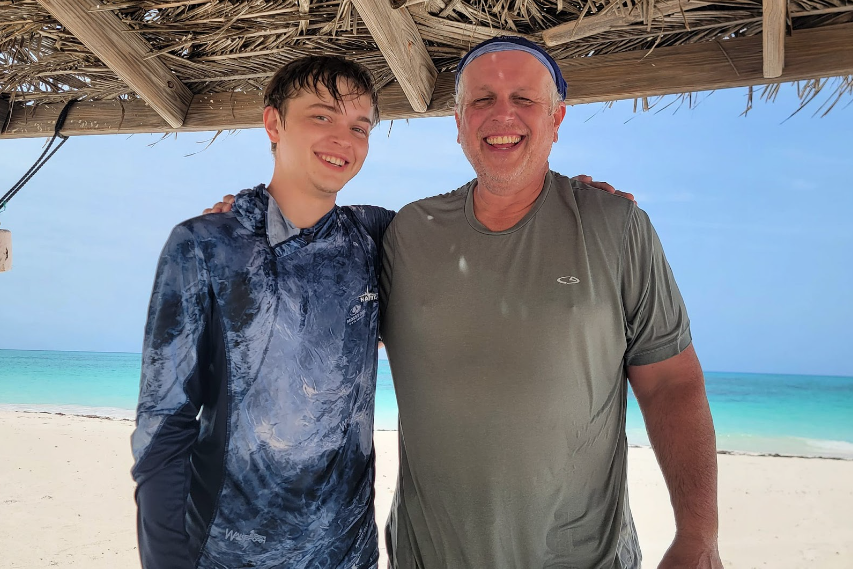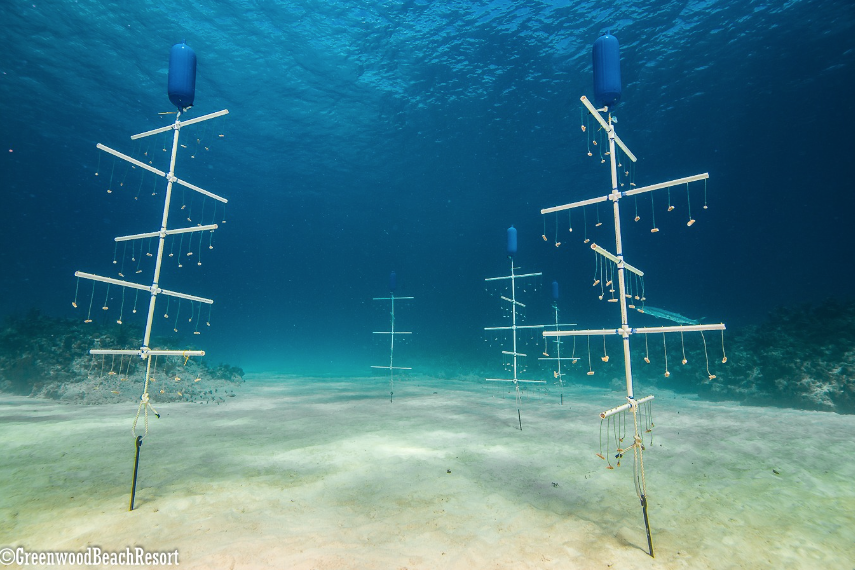While staying on Cat Island in the Bahamas one day my family and I went to eat at the Greenwood Resort. Not only did it have a spectacular view and food but the people were all very warm and welcoming. Pauline Vaz Branco and her husband Antwon have been on the island for nine years and they both wear many hats. Owner and operator of a resort, Scuba and kite surfing instructor, magician, bartender, and last but not least – coral nursery technician.
Upon getting more acquainted with Pauline and Antwon I realized they were involved with PIMS coral outplanting project. I of course had to learn more. The following is a transcript of an interview I conducted with Pauline at Greenwood.
Please introduce yourself and explain how you ended up on Cat Island and became involved in coral restoration.
My name is Pauline Vaz Branco and we arrived in Cat Island nine years ago. I’ve been diving since I was a kid – I now have 32 years of experience. Originally, Antwon and I lived in Curacao, and I always wanted to work with the reefs. We ended up applying for a job at the Greenwood Resort. Out of 12 couples, we got the job because I was a scuba instructor, he was a kitesurfing instructor, and we spoke four different languages together. After this, PIMS (Perry Institute of Marine Science) ended up contacting me. They said hey, we are working with the Bahamas and trying to set up a coral nursery, and I was like, oh, that’s great. Destiny happened.
So, is the project you’re working on mainly dealing with Staghorn restoration?
Yes, they are critically endangered, but they’re also one of the easiest to grow. In the beginning, we were tasked with trying to locate Staghorn at different dive sites. Antwon and I went diving and took GPS coordinates, and then the PIMS team also came to dive there. They then asked which place would be good to set the trees. I decided on a spot at around 40 feet protected between the reefs with good water circulation. We then went to each of the dive sites we found Staghorns at and sampled 50 fragments to fill a tree.
The idea is to grow the fragments as big as possible and then outplant them on the reef. I just checked today and they are growing good. Last summer, it went up to 32 degrees C (89.6 F). We started to see bleaching. When you were on the boat, and the water was still, all you could see was white – it was pretty scary.
The good news is that not all of them died, and some are starting to grow back. Around 2020, there was a project with SHEDD, and they asked if we wanted to add two more coral nurseries. They wanted to add different corals from across the Bahamas. The idea was to have ten fragments from different sites: Nassau, Eleuthera, Bimini, Andros, and us. Once all of the coral were together on one tree, the hope was that when spawning occurred, their genetics could cross and produce more resilient coral. But not all of them survived. Cat Islands did because they were in their native water.
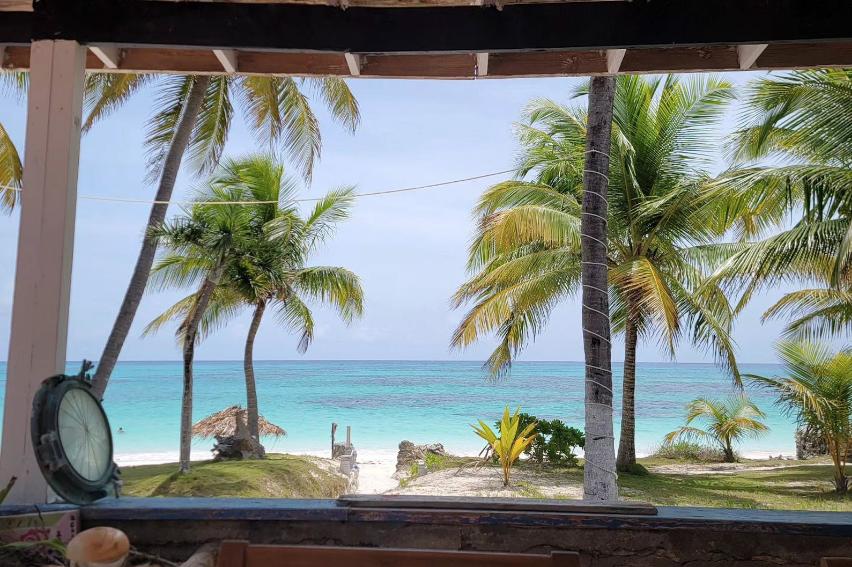
Are you continuing the SHEDD genetics experiment?
Yes, we lost one tree, but we are still continuing with the other.
What does the process look like for outplanting? Do you grow frags on the trees and then take frags of those colonies to outplant, or do you plant entire colonies?
We outplant and then keep some on the tree to continue to repopulate it – we just grow over and over.
What success have you had with outplanting so far? Has anything been able to retake successfully?
One tree survived 100%, another one was 50%, and the other was lost because of the hurricane and storms. So far, the project has worked pretty well.
Have you found an optimal time during the year to outplant where you may have better survival rates?
I recommended we try again in November – since the water is cooler they will likely survive – in a year we are going to try Acropora cervicornis and Elkhorn.
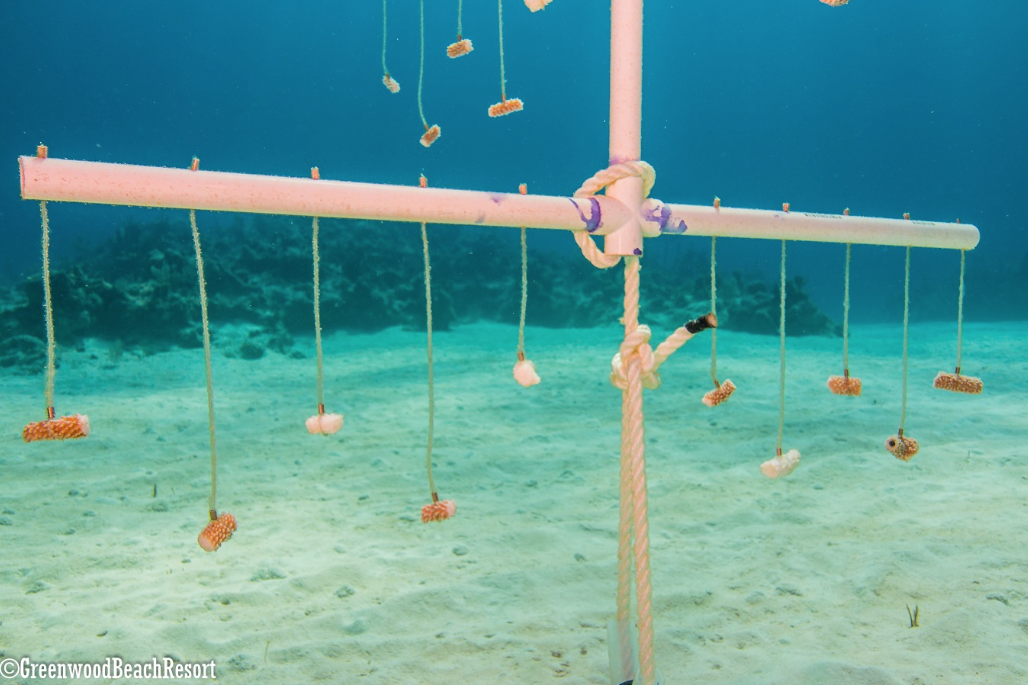
So we have spoken about Staghorn. What about Elkhorns? Have you seen any of those left?
Elkhorns are another project. Off the beach on the reef, we have small domes we have been outcropping them in. Last summer, in June, it was too late; the water was too hot, and there were some bacteria that were very slimy—the heat and the bacteria issue killed them.
Where do you tend to find Elkhorn and Staghorn – are there any healthy populations left?
They are hard to find and it’s up to luck – Elkhorn I notice more shallow and the Staghorn I tend to find deeper around 60 feet.
In terms of reef health in general, I haven’t seen much besides sponges and algae. Are the reefs healthy further out, or do they all have minimal coral cover now?
Near the shore, low tide exposes the reefs, which causes issues. Also, a lot of people go diving and snorkeling here—with all of the sunscreen and other products, it can cause issues. The reef is not the best on the Atlantic side—more wind, more current, etc. The reef is healthier on the Caribbean side farther out. But there’s still plenty of life—I still found seahorses and some slugs. There are lots of nurseries here for small and baby fish.
So you haven’t noticed a change in the fish population much – just a decline in coral cover?
Yes, that’s correct.
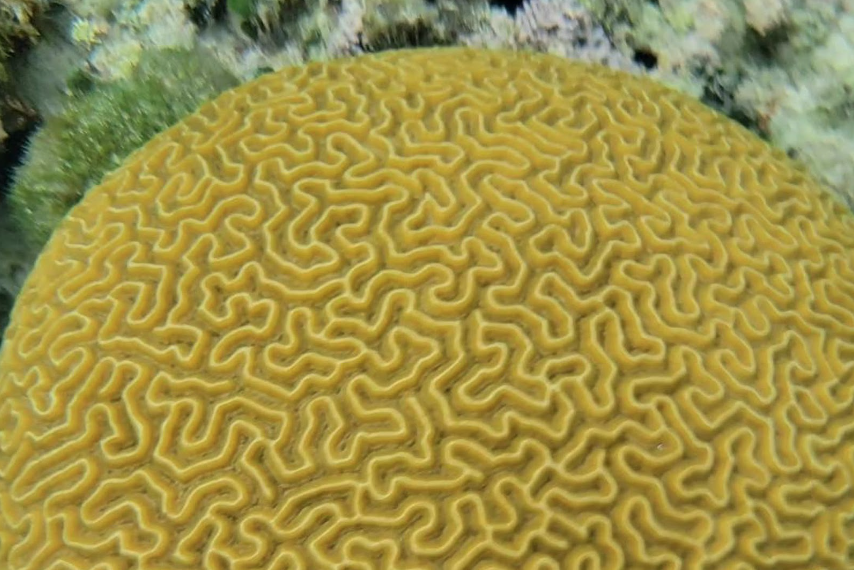
Were the reefs healthier nine years ago compared to now – have you observed their decline?
We have seen the corals and conch decline – I no longer serve conch on the menu.
That makes sense. Every menu I have seen has had conch on it, despite the fact that it is now listed as a threatened species.
You can’t really blame the locals. They see a tourist making a mistake and think, why are they allowed to do it, but now Bahamians. I think the solution is education – I try to make all of my guests aware. I tell them if they serve lobster, it’s out of season right now, and to only have conch if they harvest large mature ones. Tourists are the ones who should play the game more because if you see one of these things on a menu and you are aware the season is closed, then it’s your choice to say no, I’m not going to do that. I want to help your country keep those resources. That’s the way to improve it.
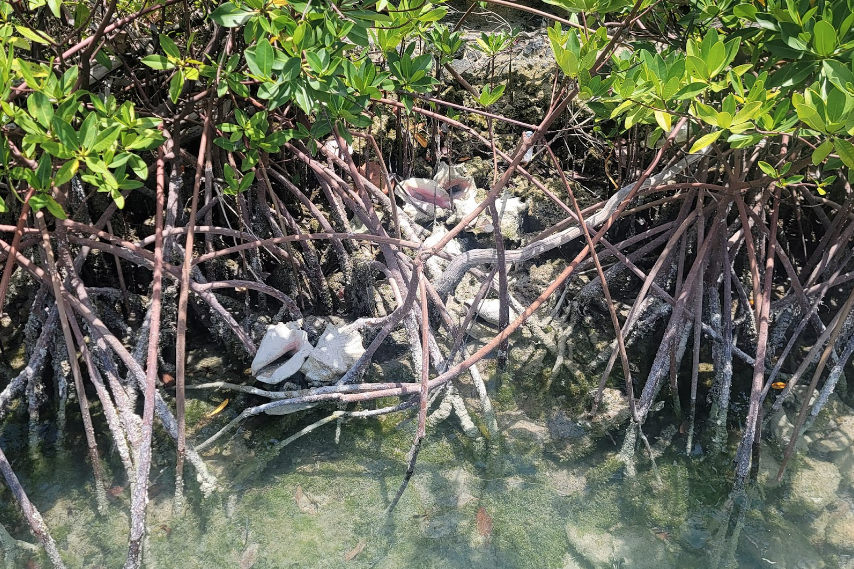
So, do you think education is the solution?
The kids are important, too. PIMS helps to educate kids in Nassau where they try to explain marine life and what’s important to coral and to try to train more Bahamians in Scuba.
Are the locals you talk to open to the idea that some of this may be bad, or do you think local participation will only come from future generations?
Future – but I did have two Bahamians contact me to do an open water course, and I was very happy because, in nine years, no locals really asked me. I am happy not just because they want to open their own business but because I can help educate them. I think that’s also why it’s important to talk to kids – they are the best messenger.
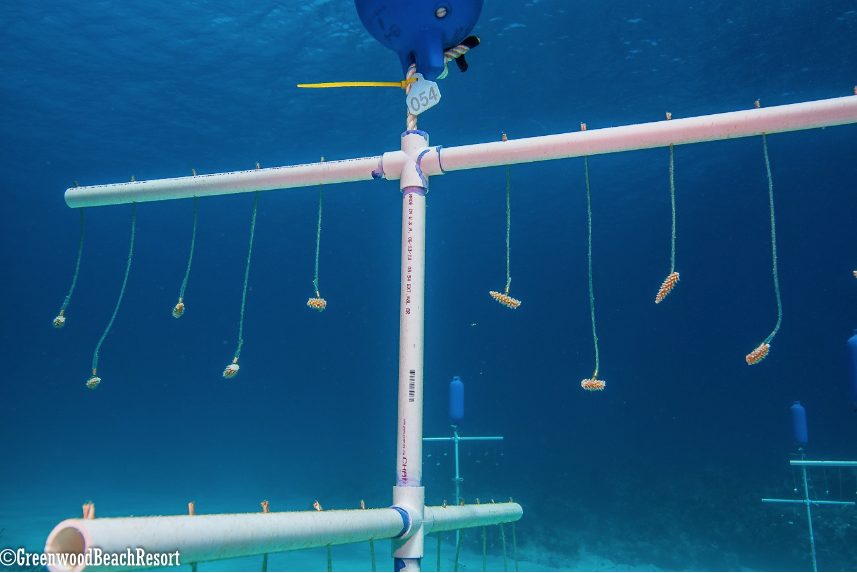
What do you think needs to happen with reef restoration? Do you think outplanting is the best strategy? Are there any laws you can think of that could be passed? Are people interfering with things?
First, we have a problem with SCTLD (stony coral tissue loss disease). After training with PIMS, we believe it’s coming from American boats leaving from Florida. They likely bring the disease in their ballast, dump it in a hawk nest in the marina, and then move it across the reefs as they fish. They don’t bleach or clean their ballast, so it spreads.
The best idea for individual people would be to properly clean your dive gear and your boat’s pump which can help prevent the spread.
Outplanting is the only technique we have been doing directly – but crossing the DNA and having different corals next to them would be good.
Maybe it would be a good idea to freeze samples and send them off. Cryopreservation.
What are your goals with Greenwood, and where do you see yourself in the future?
I do the coral work because I care – it’s something I always wanted to know about and when I got asked to do it I had to. Greenwood would love to grow and get bigger – we would like to have an instructor development course so we can get more and more diverse people and help educate more of them. We do reef restoration courses as well, where people can get certified and assist in conservation.
